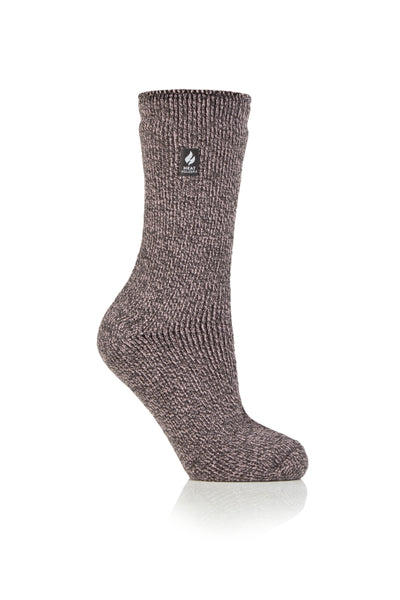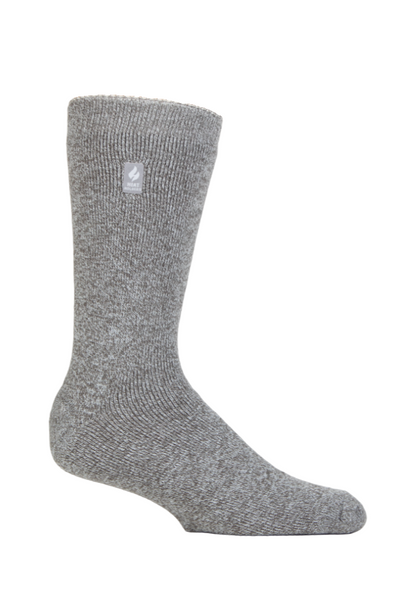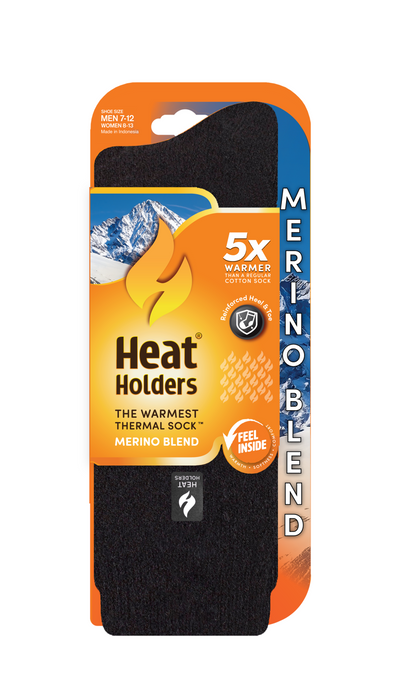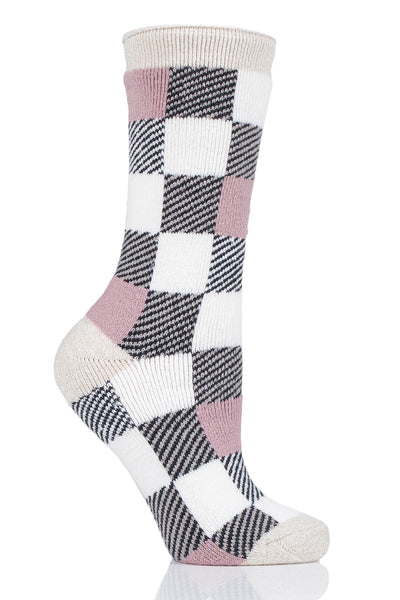When it comes to keeping your feet warm during the colder months, the debate between thermal socks and wool socks is an enduring one. Both types of socks have their unique attributes and benefits. In this article, we will explore the characteristics, advantages, and disadvantages of each option. Finally, we'll compare their warmth and help you make an informed choice tailored to your needs.
Understanding the Basics of Thermal Socks
Material and Design of Thermal Socks
Thermal socks are primarily designed to offer maximum insulation and warmth. They are typically made from synthetic materials like acrylic, polyester, or a blend of both. These materials are lightweight and created specifically to trap warmth. Many thermal socks also incorporate additional layers for added insulation and cushioning. Some brands have even started to experiment with innovative materials like Merino wool blends, which combine the best of both worlds—natural warmth and moisture-wicking properties of wool with the lightweight durability of synthetics.
The design of thermal socks usually features a thicker construction compared to regular socks, which enhances the air pockets that hold warmth. They often have a tighter fit around the ankle and calf to keep the socks secure and prevent heat from escaping. Moreover, many thermal socks come with additional features such as arch support and cushioned soles, which not only provide comfort but also help reduce fatigue during long hours of wear. The incorporation of seamless toe designs is another thoughtful aspect aimed at minimizing irritation and enhancing overall comfort during extended use.
Benefits of Thermal Socks
One of the main benefits of thermal socks is their high heat retention capability. They are engineered specifically for cold environments, making them a top choice for winter activities such as hiking, skiing, or even just running errands on chilly days. The ability to maintain warmth without adding excessive bulk makes them a favorite among outdoor enthusiasts who require both comfort and functionality.
-
Moisture-Wicking: Many thermal socks are designed to wick moisture away from the skin, which helps to keep your feet dry and warm. This feature is particularly beneficial during high-intensity activities where sweat production is increased.
-
Quick-Drying: The synthetic materials allow them to dry rapidly, making them convenient for quick laundry turnarounds. This is especially useful for travelers or those who enjoy multi-day excursions where access to laundry facilities may be limited.
-
Durability: Thermal socks typically have reinforced stitching, contributing to their longevity. This durability is crucial for those who frequently engage in rugged outdoor activities, as it ensures the socks can withstand wear and tear over time.
Potential Drawbacks of Thermal Socks
Despite their benefits, thermal socks also have some drawbacks. The primary concern for many avid outdoor enthusiasts is breathability. The synthetic materials, while excellent for warmth, can sometimes trap moisture and heat when worn for long periods. This can lead to discomfort and even blisters, particularly in situations where prolonged movement is involved, such as hiking or skiing.
Additionally, some people may find thermal socks less comfortable than wool socks due to their thickness and synthetic composition, which might not conform as easily to the foot. For those with sensitive skin, the synthetic fibers can sometimes cause irritation, leading to a preference for natural materials. Furthermore, the thicker construction may not fit well in tighter footwear, limiting the versatility of thermal socks for various activities. Understanding these nuances can help consumers make informed choices when selecting thermal socks for their specific needs.
Delving into the World of Wool Socks
What Makes Wool Socks Unique
Wool socks are traditionally made from natural fibers sourced from sheep, with Merino wool being a popular choice due to its softness and performance attributes. Wool has a unique ability to retain warmth, even when damp, and provides excellent breathability. This characteristic is particularly beneficial for those who engage in outdoor activities, as it helps keep feet comfortable in varying weather conditions.
The natural crimp in wool fibers creates air pockets, offering insulation while allowing for moisture regulation. This characteristic makes wool an excellent choice for various outdoor settings, as it can help regulate foot temperature effectively. Additionally, the natural elasticity of wool allows for a snug fit that moves with the foot, providing support and reducing the risk of blisters during long hikes or extended wear.
Advantages of Wool Socks
Wool socks boast several advantages that make them a favorite among many. They offer remarkable thermal insulation, wick moisture effectively, and can regulate temperature by adjusting to your body’s needs. This adaptability makes wool socks a versatile choice for various activities, whether you're skiing, hiking, or simply enjoying a cozy evening at home.
-
Comfort: Wool is often softer and more comfortable to wear against the skin compared to synthetic materials.
-
Odor Resistance: Wool has natural antibacterial properties that help reduce odors, making them ideal for extended use.
-
Eco-Friendly: Being made from natural materials, wool socks are more sustainable and biodegradable than their synthetic counterparts.
Moreover, the moisture-wicking properties of wool help keep feet dry, which is crucial for preventing blisters and maintaining overall foot health during vigorous activities. This is particularly important for athletes and outdoor enthusiasts who spend long hours on their feet. The durability of wool also means that, with proper care, these socks can withstand the rigors of outdoor adventures while maintaining their shape and functionality over time.
Possible Disadvantages of Wool Socks
While wool socks have many benefits, they are not without drawbacks. For instance, they can sometimes be more expensive than thermal options, as quality wool is a premium material. Some individuals may also be sensitive to wool or find it scratchy, leading to discomfort. This sensitivity can be particularly notable in those who are used to the feel of synthetic fibers, which often have a smoother texture.
Furthermore, wool requires special care in washing and drying to maintain its integrity, which can be inconvenient for some users. Machine washing on a gentle cycle and air drying are typically recommended to prevent shrinkage and preserve the fibers. However, many brands now offer machine-washable wool blends that make maintenance easier, allowing users to enjoy the benefits of wool without the hassle of high-maintenance care routines.
Comparing the Warmth of Thermal and Wool Socks
Factors Affecting Warmth in Socks
When comparing thermal and wool socks, several factors determine their effectiveness in retaining warmth. These include material properties, thickness, and design features. Both types utilize insulating capabilities differently due to their material composition.
Additionally, the fit of the sock plays a critical role. Socks that are too tight can restrict blood flow, leading to colder feet, while those that are too loose may not provide adequate insulation. The construction of the sock, such as whether it has reinforced heels and toes, can also influence warmth and durability. Moreover, the length of the sock—whether crew, knee-high, or ankle—can impact how much of your leg is covered and insulated, further contributing to overall warmth.
How Thermal Socks Provide Warmth
Thermal socks keep your feet warm primarily through their synthetic materials and specialized design. The extra thickness creates a layer of trapped air that acts as insulation, while moisture-wicking properties contribute to overall comfort. They are specifically formulated for cold weather, making them an excellent choice for activities where extreme temperatures prevail. Many thermal socks also incorporate additional features such as cushioned soles and arch support, enhancing comfort during prolonged wear. Furthermore, some brands utilize advanced technologies like heat-retention fibers that actively reflect body heat back to the feet, providing an extra layer of warmth during frigid outings.
How Wool Socks Retain Heat
Wool socks retain heat through the unique properties of wool fibers. The natural ability of wool to maintain insulation even when wet is a huge advantage. This is particularly useful for those engaged in activities that involve moisture, such as hiking in wet conditions. Additionally, wool’s breathability helps to moderate temperature, ensuring your feet stay warm without overheating. Wool socks often feature a natural lanolin coating, which provides water resistance and helps to repel moisture, keeping your feet dry and comfortable. The insulating properties of wool are enhanced by its crimped structure, which creates tiny air pockets that trap heat, making wool an ideal choice for cold-weather adventures. Moreover, many modern wool socks blend Merino wool with synthetic fibers, combining the best of both worlds for durability and softness, making them a favorite among outdoor enthusiasts.
Making the Right Choice for Your Needs
Considerations for Outdoor Activities
Choosing between thermal and wool socks for outdoor activities requires consideration of the specific conditions you’ll encounter. If you are likely to engage in high-energy activities in frigid temperatures, thermal socks may be preferable due to their insulation and moisture management capabilities. These socks are often designed with advanced materials that trap heat while allowing sweat to escape, ensuring your feet remain warm without becoming damp and cold.
Conversely, if you are going to be in fluctuating temperatures or high moisture conditions, wool socks may provide a more comfortable option that balances warmth with breathability. Wool is a natural insulator, and its fibers can wick moisture away from the skin, keeping your feet dry even during strenuous activities. Additionally, the natural elasticity of wool allows for a snug fit, which can help prevent blisters during long hikes or climbs.
ALT IMG TXT: Person Wearing White Socks Holding Coffee Mug
Choosing Socks for Cold Weather
For general cold weather usage, both thermal and wool socks can be effective. Thermal socks are ideal for consistent cold, while wool socks excel in providing warmth with moisture control. If you prioritize staying dry as well as warm, wool could be the better choice. Moreover, wool has natural antibacterial properties, which can help reduce odor, making it a great option for multi-day trips where washing may not be feasible.
When selecting socks for extreme cold, consider looking for options that feature additional cushioning and reinforced areas, such as the heel and toe, to provide extra comfort and durability. Some thermal socks even come with built-in arch support, which can be beneficial for those who are on their feet for long periods. This added support can help prevent fatigue and discomfort, allowing you to enjoy your outdoor adventures longer.

Selecting Socks for Everyday Use
When selecting socks for everyday wear, consider your activities, preferences, and local climate. Thermal socks can be great for those who spend extended time outdoors. On the other hand, wool socks can provide all-day comfort for casual wear, as they tend to be less bulky and breathe better. The versatility of wool socks makes them suitable for both casual outings and more formal settings, as they can easily be paired with various types of footwear.
Additionally, many brands now offer stylish designs and colors in both thermal and wool options, allowing you to express your personal style while still prioritizing comfort. Look for features like seamless toes and cushioned soles that enhance the overall wearing experience. With advancements in sock technology, you can find options that not only meet your functional needs but also complement your wardrobe seamlessly. Whether you're heading to the office or out for a weekend hike, the right pair of socks can make all the difference in your day-to-day comfort and performance.
Heat Holders® Merino Wool Socks
Heat Holders® Merino Wool socks are a great choice for folks who love love love wool socks! These thermal wool socks come in ORIGINAL™ and LITE™ profiles or 8X and 5X warmer than the average cotton sock letting you choose the sock that's right for the temperature and the shoes you're wearing! Happy shopping!
















